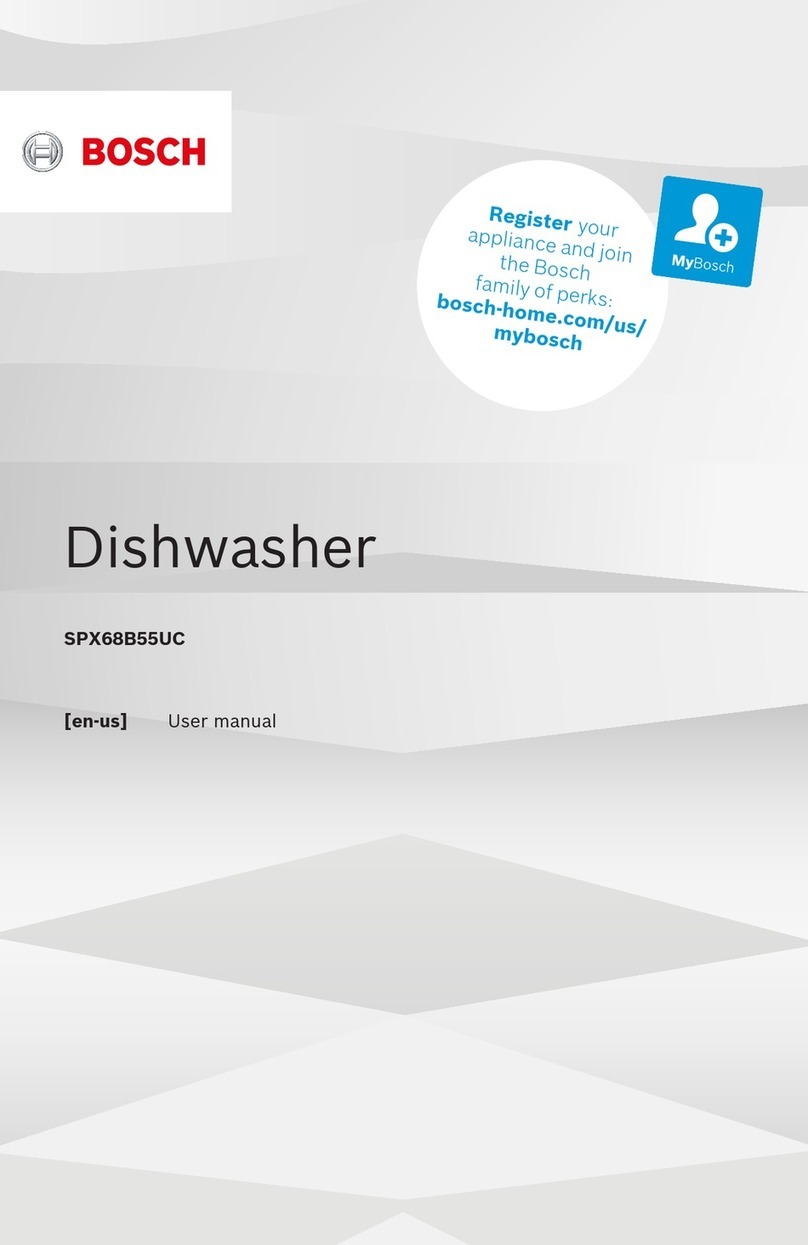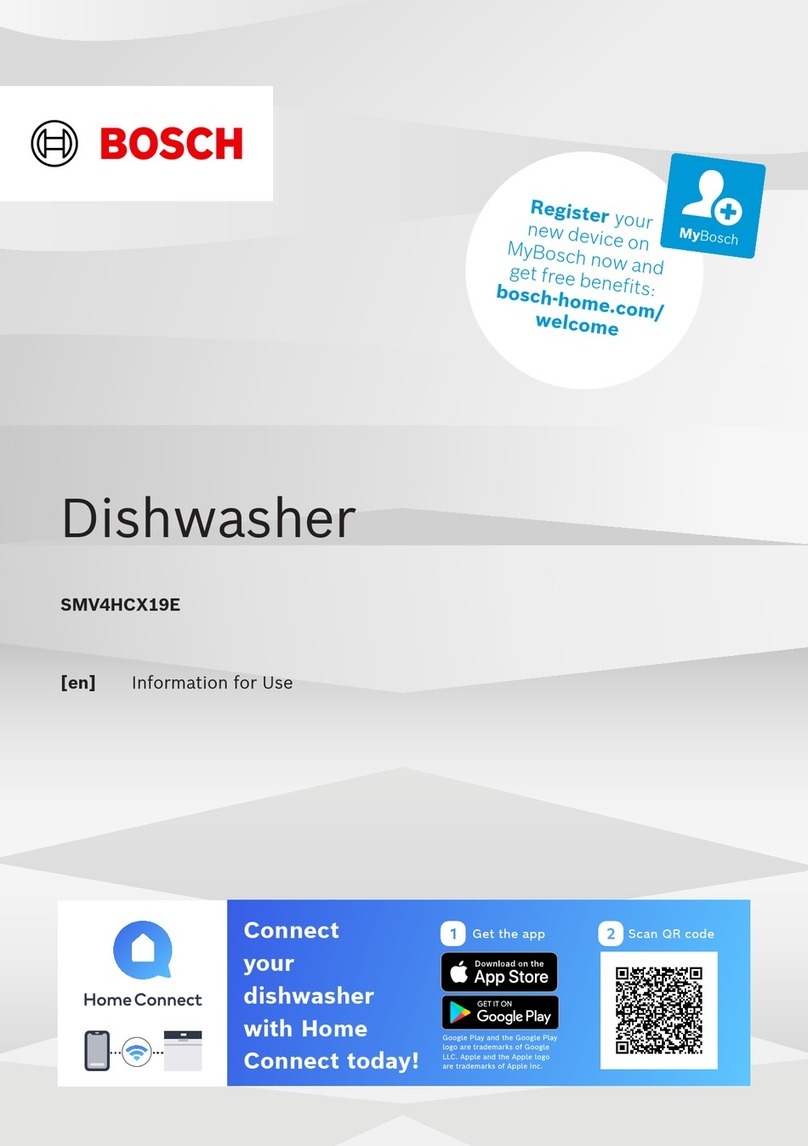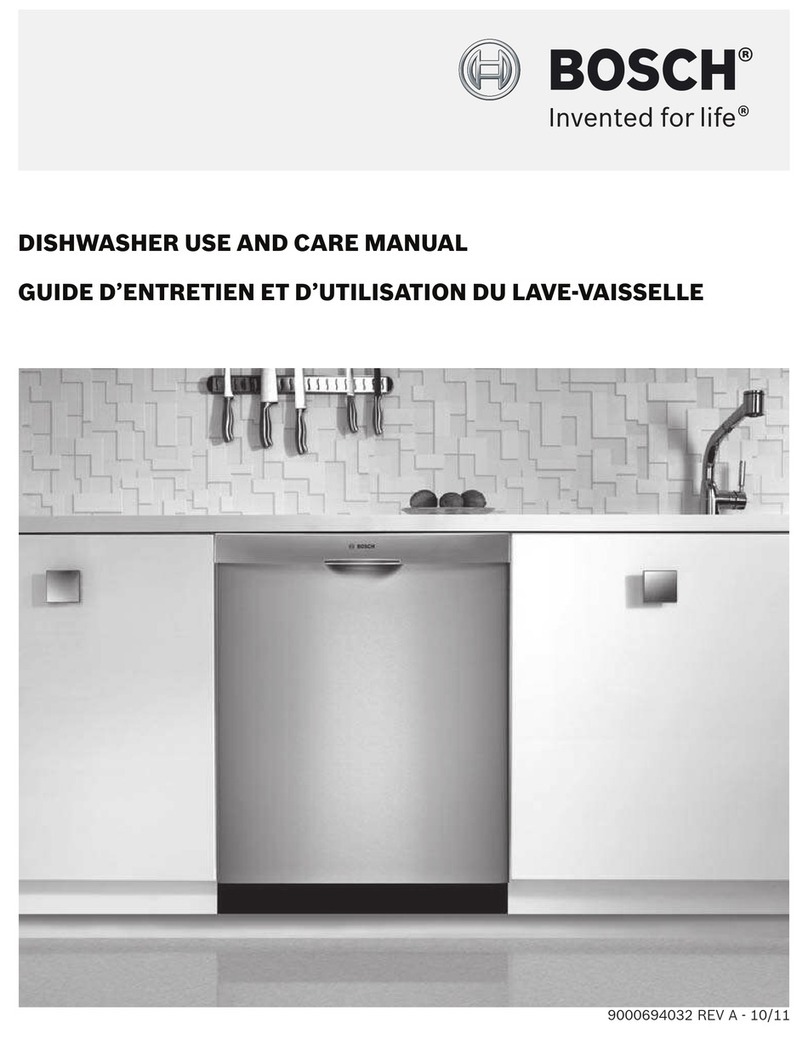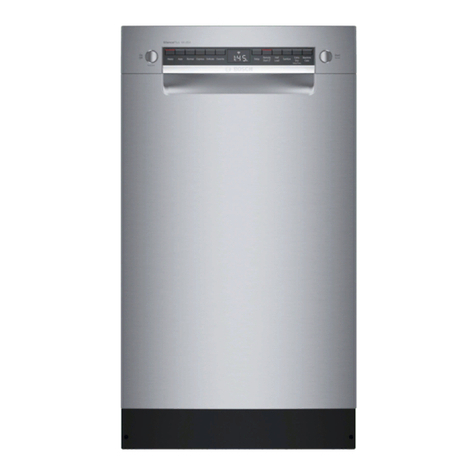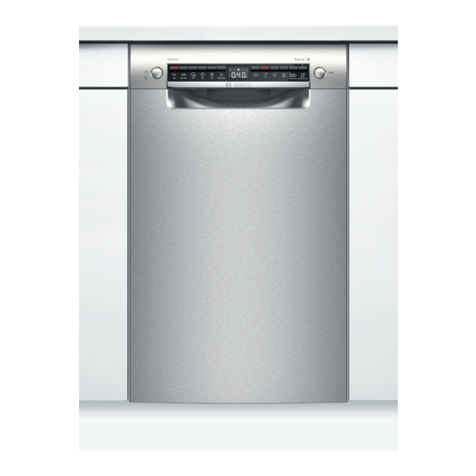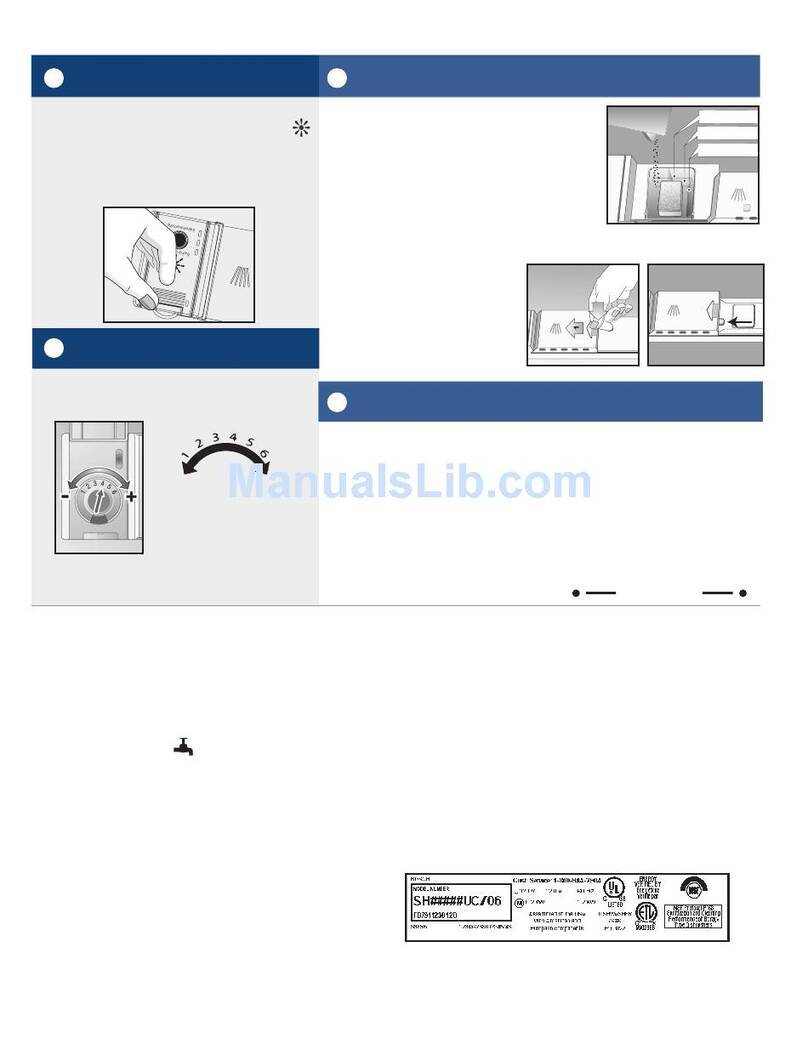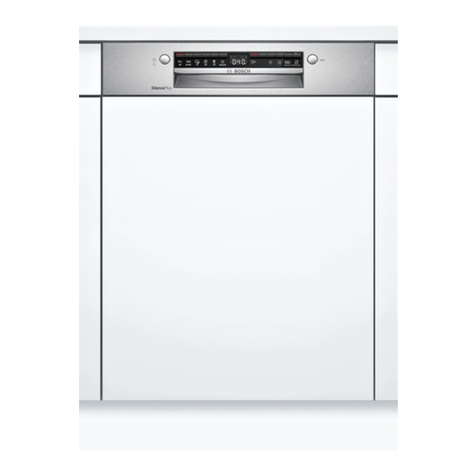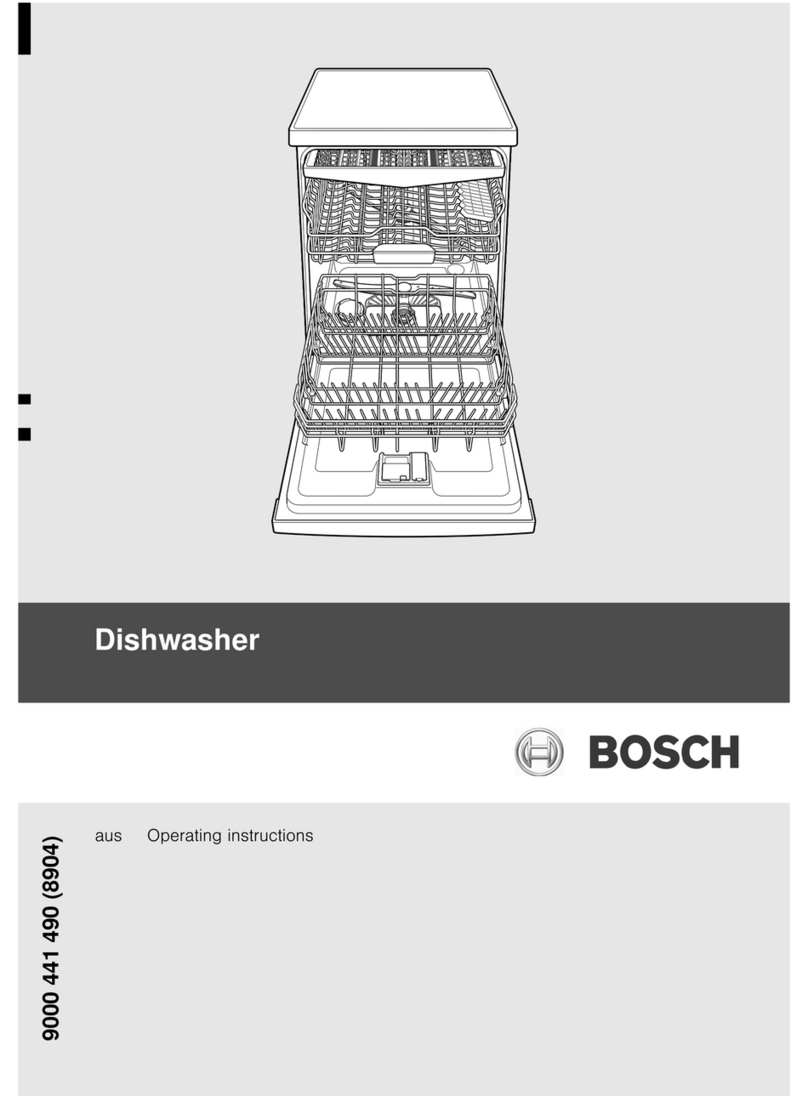3
WARNING: To reduce the risk of fire, elec-
trical shock, or serious injury, observe the
following:
1 This dishwasher is provided with Installation Instructions and this
Use and Care Manual (operating instructions). Read and under-
stand all instructions before using the dishwasher.
2 This appliance must be grounded to a metal, permanent wiring
system, or an equipment grounding conductor must be run with
the circuit conductors and connected to the equipment grounding
terminal or lead on the dishwasher. See the Installation Instruc-
tions included with this dishwasher for more information on elec-
trical requirements.
3 Use this dishwasher only for its intended function, which is the
washing of household dishware and kitchenware rated as dish-
washer safe.
4 Use only detergents or rinsing agents recommended for use in a
dishwasher, and keep them out of the reach of children.
5 When loading items to be washed:
• Locate sharp items so they are not likely to damage the
door seal.
• Load knives and other sharp utensils with their HANDLES UP
to reduce the risk of cut-type injuries.
• Do not wash plastic items unless they are marked “dish-
washer safe” or the equivalent. For plastic items not so
marked, check the manufacturer’s recommendations.
• Do not operate your dishwasher unless all enclosure pan-
els are in place.
• Do not tamper with or override controls and interlocks.
6 Do not abuse, sit or stand on the door or dish racks of the dish-
washer.
7 To reduce risk of injury, do not allow children to play in or on the
dishwasher.
8 When children become old enough to operate the appliance, it is
the responsibility of the parents/legal guardians to ensure the chil-
dren are instructed in safe practices by qualified persons.
9 Under certain conditions, hydrogen gas may be produced in a hot
water system that has not been used for two weeks or more.
Hydrogen gas is explosive. Before using a dishwasher that is con-
nected to a hot water system that has been unused for two weeks
or longer, turn on all hot water faucets and let the water flow from
each for several minutes. This will release any accumulated hydro-
gen gas. As the gas is explosive, do not smoke or use an open
flame during this time.



